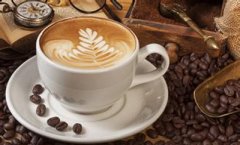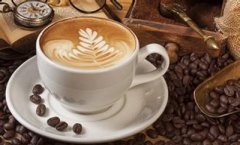Historical Chronicle of the basic knowledge of Fine Coffee Culture-3

In 1933, the first automatic coffee extractor was improved.
In 1935, a dwarf variety of Bourbon was discovered in Sao Paulo, Brazil, and named Cadura;
In 1938, Nestle developed a modern "spray drying method" in Brazil;
In 1938, Italian Achille Gaggia invented the espresso machine.
In 1941, German chemist Schlumbauer introduced Chemex, a follicular kettle with a filter cup and a bottom kettle. All made of heat-resistant glass, the filter paper used is also about 20%~30% heavier than the general filter paper;
In 1945, coffee espresso machines were perfected with a piston, which produced high pressure and extracted a thick layer of coffee grease;
In 1948, the Italian company Gaggia designed an improved piston-lever pressurized espresso machine;
After 1960, the United States invented the electric drip pot, also known as the American coffee machine;
In 1961, Italy's Faema company produced the first pump-type espresso machine that replaced the piston with a pump, the famous Faema E61;
In 1964, General Foods invented the "freeze-drying method" to make instant coffee;
Alfred Peet opened a shop in San Francisco in 1966 to promote fresh, deep-roasted coffee beans.
In 1971, three of Pitt's apprentices founded Starbucks Coffee in Seattle.
Important Notice :
前街咖啡 FrontStreet Coffee has moved to new addredd:
FrontStreet Coffee Address: 315,Donghua East Road,GuangZhou
Tel:020 38364473
- Prev

How do baristas identify authentic Blue Mountain Coffee?
Let's take a look at how to identify authentic Blue Mountain Coffee: 1 the raw beans of Blue Mountain Coffee are cyan, neat in appearance, medium in size and slightly warped at both ends. After baking, the volume increases a lot, very full. 2 grinding beans real blue mountain coffee beans grow at high altitude, its cytoplasmic structure is relatively loose, when grinding by hand, it feels very crisp, cool and continuous, and there will be no
- Next

The basic knowledge of brewing coffee
Siphon grinding: the medium and fine siphon pot is a method of extracting coffee by using steam pressure. its interesting is that it can fully see through the process of coffee extraction. After boiling, the boiling water in the flask evaporates directly into the funnel, and the coffee extraction process is completed. The extracted coffee flows into the flask again, as if it were a dramatic performance, not only in taste, but also visually.
Related
- Beginners will see the "Coffee pull flower" guide!
- What is the difference between ice blog purified milk and ordinary milk coffee?
- Why is the Philippines the largest producer of crops in Liberia?
- For coffee extraction, should the fine powder be retained?
- How does extracted espresso fill pressed powder? How much strength does it take to press the powder?
- How to make jasmine cold extract coffee? Is the jasmine + latte good?
- Will this little toy really make the coffee taste better? How does Lily Drip affect coffee extraction?
- Will the action of slapping the filter cup also affect coffee extraction?
- What's the difference between powder-to-water ratio and powder-to-liquid ratio?
- What is the Ethiopian local species? What does it have to do with Heirloom native species?

